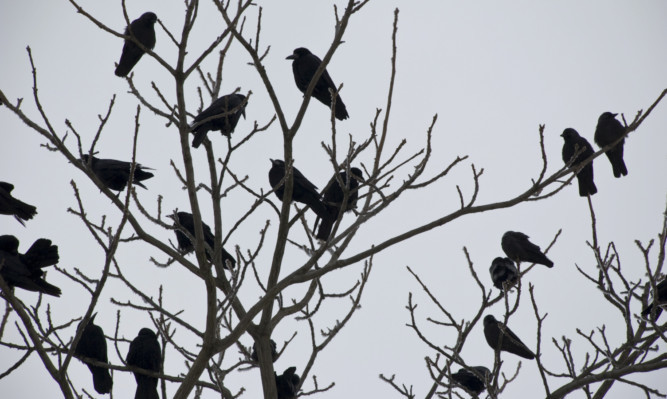Crows like nothing better than a good gossip according to a study led by St Andrews University.
Just as office workers have a natter around the coffee machine at breaks, New Caledonian Crows have been found to communicate with each other at food sources.
Study co-author Dr Christian Rutz, from the School of Biology at St Andrews, said: “We found that providing food has a similar effect to putting a coffee machine or water-cooler in an office. Individuals aggregate around the resource, and the spread of interesting information is accelerated.”
New Caledonian crows are intelligent birds which have displayed an extraordinary ability to use tools. They have been observed turning branches into hooks and tearing leaves into barbed probes to get at hard-to-reach food.
The scientists studied how information might spread within and between groups of the tool-using corvids. Their findings have been published in the scientific journal Nature Communications.
Dr James St Clair, lead author of the study, said: “Tool use is unusual in animals and requires special knowledge. Individuals not only need to know how to make tools, but also where, when and how to actually use them.
“Crows could perhaps learn this sort of information from their neighbours, so we looked at how skills might spread among groups of birds.”
Crows were fitted with a hi-tech, miniature spy tag, which communicated with tags on other crows and provided a continuous record of who met whom at any given time.
After recording crows’ encounters, the scientists provided a decaying log full of beetle grubs for the birds to eat. They reasoned that providing the hard-to-reach food would bring the crows together and provide opportunities for them to learn skills from one another.
Professor Rob Fleischer, from the Smithsonian Conservation Biology Institute in Washington, DC, said: “It was exciting to see how non-family birds suddenly started aggregating under these conditions.”
Dr Dick James from Bath University, who co-authored the study, said: “By using tags to record actual associations, minute-by-minute, we were able to explore network dynamics over very short timescales.”
